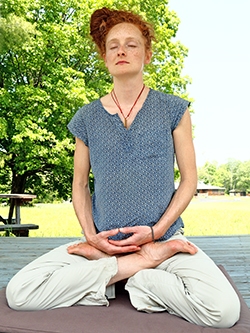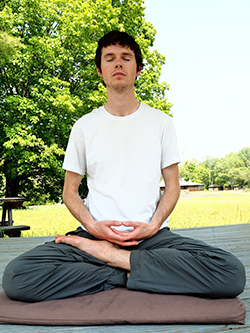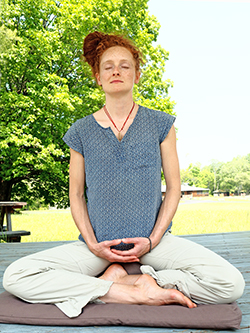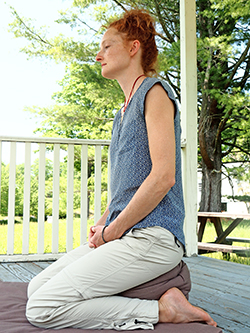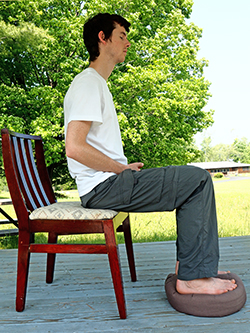SITTING MEDITATION
Of all the postures and activities, the seated position is acknowledged as superior for meditation for it offers the optimum blend of relaxation and alertness. Naturally, there are many forms of sitting. Over the centuries, the Buddhist tradition has developed guidelines for sitting, so that posture and practice can bring the greatest meditative benefit.
Seated meditation is not intended to force the body into a rigid stillness, but is designed to allow it to relax progressively to the point where it settles into perfect equipoise. When proper sitting posture has been achieved, one will feel quite alert both mentally and physically.
Seated meditation is not intended to force the body into a rigid stillness, but is designed to allow it to relax progressively to the point where it settles into perfect equipoise. When proper sitting posture has been achieved, one will feel quite alert both mentally and physically.
Seven Points of Posture for Seated Meditation
In sitting meditation, one should observe the seven points of the correct sitting posture. Each of these criteria has been used unchanged since ancient days. The purpose of aligning these areas of the body is to stabilize the body so one can focus the mind.
1. Legs
Seated meditation postures are described in greater length below. Choose a posture that will be comfortable and stable for twenty minutes or so. The key point is that your legs release downward and the pelvis is allowed to tip forward slightly. If seated on a cushion, your knees and buttocks form three contact points with the ground allowing you to be rooted and strong.2. Spine
The spine must be upright. This does not mean to thrust your chest forward, but rather to make sure that your lower back is erect, not slumped, and that your chin is tucked in. Both of these points help you to maintain a naturally upright spine. An upright spine also means a vertical spine, leaning neither forward nor backward, right or left.3. Hands
In seated meditation, our hands form a posture called “Dharma Realm Samadhi Mudra,” which translates as: the posture or gesture (mudra) of oneness (samadhi) with reality (Dharma realm). This hand posture helps the smooth circulation of internal energies and helps harmonize the body with the external world. The open right palm is underneath, and the open left palm rests in the right palm. The thumbs lightly touch to form a closed circle or oval. The hands are placed in front of the abdomen, and rest on the legs.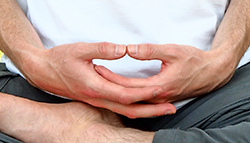
4. Shoulders
Relax the shoulders. Be natural. And let your arms hand loose. If you feel any tension in these areas, just relax them.5. Tongue
The tip of the tongue should be lightly touching the roof of the mouth just behind the front teeth. This prevents your mouth from being dry. If you have too much saliva, you can let go of this connection. If you have no saliva at all, you can apply a little bit of pressure with the tip of the tongue to the roof of the mouth.6. Mouth
The mouth should be closed. Breath through the nose, not through the mouth.7. Eyes
The eyes should be slightly open and gazing downward at a forty-five degree angle. Rest the eyes in that direction, but do not look at anything. Closing the eyes may cause drowsiness, or visual illusions. However, if your eyes feel very tired you can close them for a short while.Sitting Postures
In this section we detail several potential postures one can assume for sitting meditation. While there may be several postures appropriate for sitting meditation, they all share the same principle: the legs and buttocks provide a stable base that allows to pelvis to come slightly upward and forward, and bring the lower back and torso into comfortable alignment as described above.
